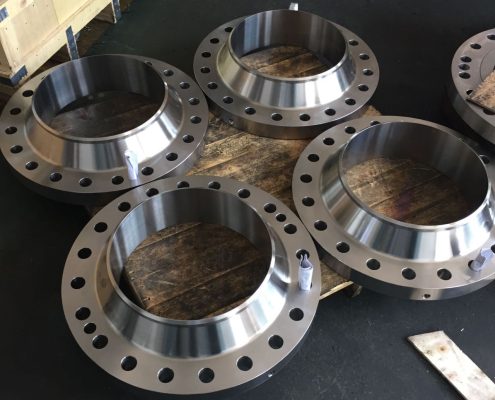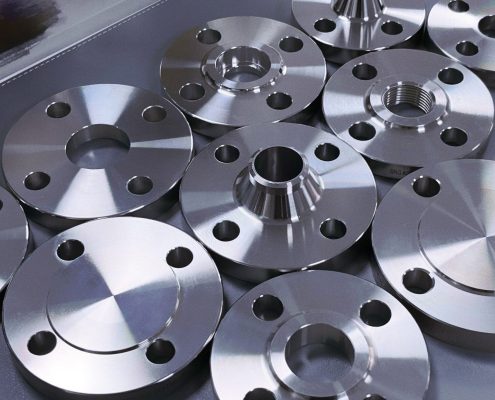Future Energy Steel specializes in providing high-quality ASME B16.5 and ASME B16.47 standard flanges to oil and gas, chemical processing, water treatment, and more. Our flange offerings include various types, such as welding neck, slip-on, blind, threaded, socket weld, and lap joint with flat face, raised face, and ring-type joints, catering to diverse industrial applications. We offer a comprehensive range of dimensions from NPS 1/2″ to NPS 60″, ensuring compatibility with different piping systems. Each flange is manufactured to meet stringent ASME standards, guaranteeing reliability and durability in high-pressure and high-temperature environments. For more information or inquiries, don’t hesitate to contact us via email at [email protected].
Ofte stillede spørgsmål
What Are ASME B16.5 And B16.47 Standards?
ASME B16.5 covers pipe flanges and flanged fittings for nominal pipe sizes from 1/2 inch to 24 inches, focusing on the design, materials, dimensions, and pressure-temperature ratings.
ASME B16.47 addresses larger flanges, specifically for nominal sizes from 26 inches to 60 inches, and includes two series: Series A (API 605) and Series B.
What Materials Are Used For ASME B16.5 And B16.47 Flanges?
Common materials include carbon steel, stainless steel, and alloy steel. Specific grades and types depend on the application and environmental conditions.
What Pressure Ratings Are Available For These Flanges?
Flanges are available in various pressure ratings, commonly ranging from Class 150 to Class 2500 for B16.5 and similar ratings for B16.47, depending on the size and material.
How Do I Determine The Correct Flange Type For My Application?
Consider factors such as pipe size, pressure requirements, temperature conditions, and the type of fluid being transported. Consulting the relevant ASME standard can provide guidance on the appropriate choice.
What Are The Differences Between Series A And Series B Flanges In ASME B16.47?
Series A flanges are designed to be compatible with API 605 and are typically thicker, while Series B flanges are based on a different design philosophy and may have different dimensions and pressure ratings.
Are There Any Specific Installation Guidelines For These Flanges?
Yes, proper installation involves ensuring that flanges are aligned correctly, using appropriate gaskets, and applying the correct torque to the bolts. Refer to the ASME standards and manufacturer guidelines for detailed instructions.
Can ASME B16.5 And B16.47 Flanges Be Used Interchangeably?
No, due to differences in dimensions, pressure ratings, and intended applications, flanges should not be used interchangeably without proper assessment.
Where Can I Find Certified ASME B16.5 And B16.47 Flanges?
Certified flanges can be sourced from reputable manufacturers and suppliers who adhere to ASME standards. Always verify certifications and compliance with industry regulations.
What Is The Significance Of Flange Dimensions In These Standards?
Flange dimensions impact the fit, sealing capability, and overall performance of the piping system. Adhering to the specified dimensions ensures compatibility and safety in operation.
How Often Should Flanges Be Inspected?
Regular inspections are recommended, especially in high-pressure or critical applications. Inspect for signs of wear, corrosion, or leakage to maintain system integrity.



